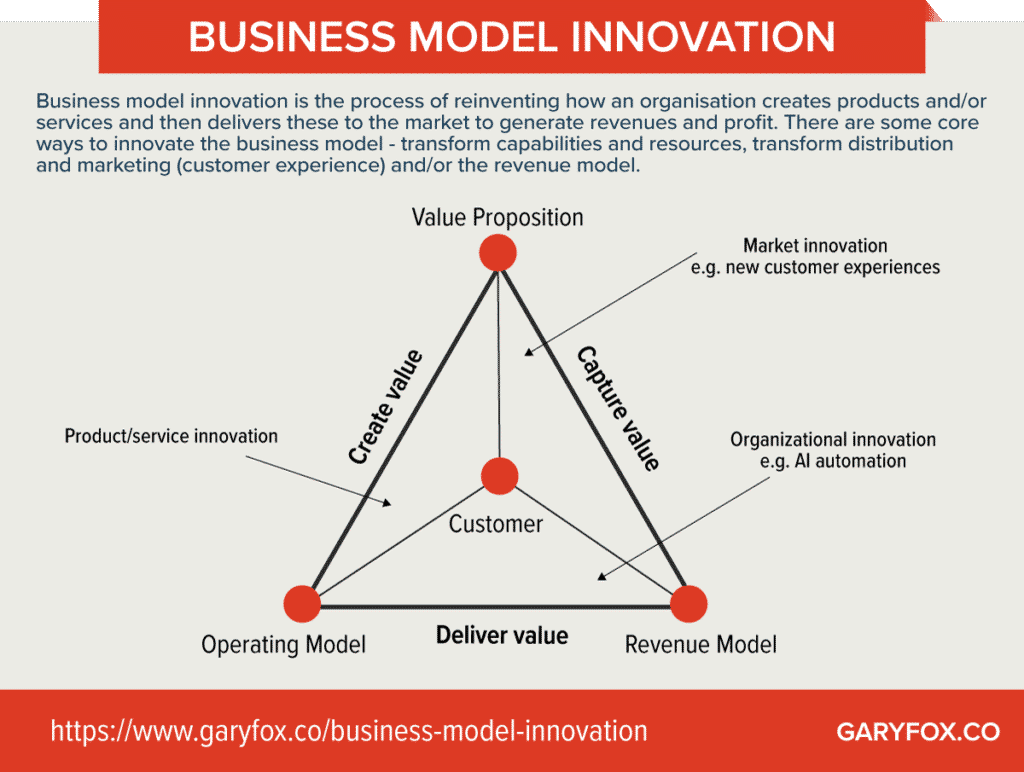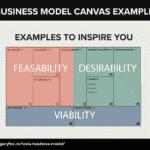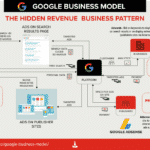Business model innovation is the key to developing a competitive advantage.
In this guide, you will learn how to innovate your business model and I’ll uncover the common mistakes and misunderstandings that hinder most companies.
Business model innovation is about doing things differently, about changing the rules of the game.
The first place to start is to explain what is a business model. A business model is a framework for how you create value and capture value. Creating value is all about how you produce, market and deliver a product and/or service. Value capture is how you make money (revenue and profits).
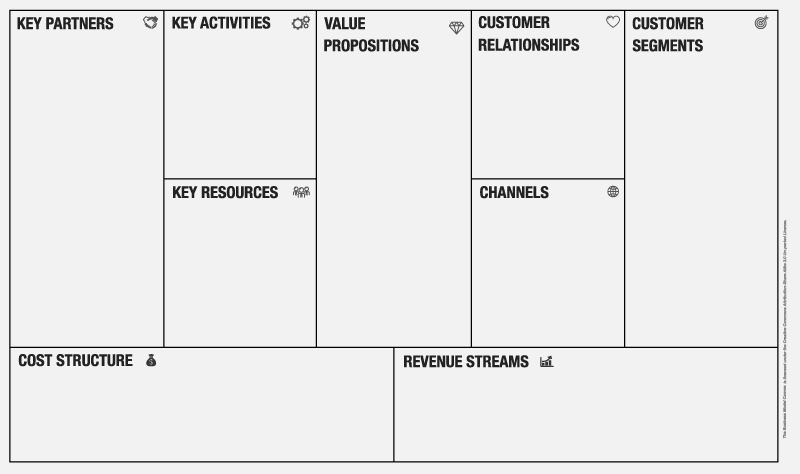
Although there is no agreed-upon definition of business model innovation, I like the explanation given by Gisen who describes it as making choices about your value proposition, revenue model, and operating model 1Three Ways to Successfully Innovate Your Business Model. Strategy & Leadership, 35 (6): pp. 27–33. Giesen, E., Berman, S. J., Bell, R., and Blitz, A. 2007..
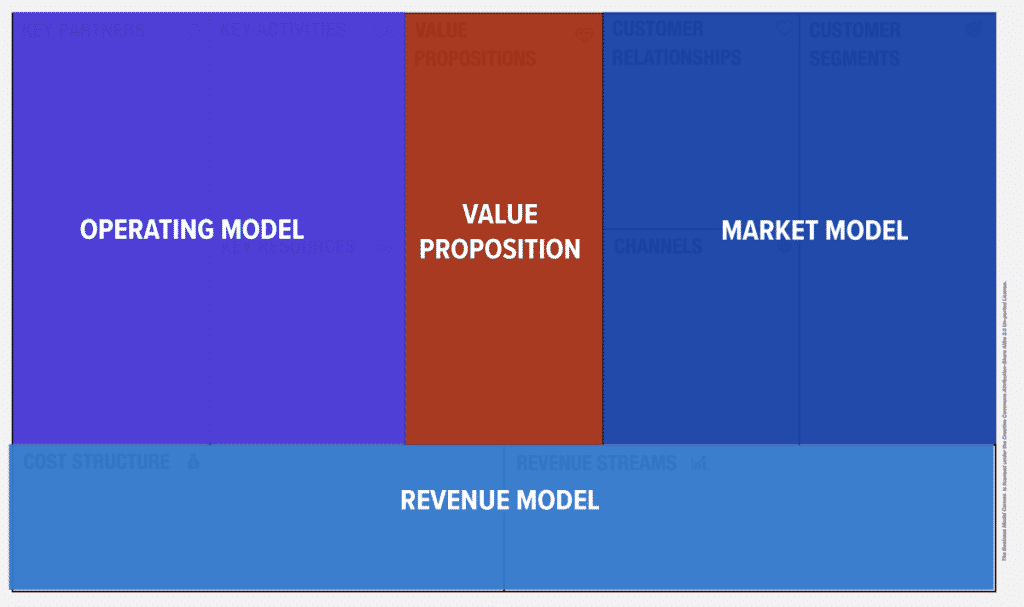
- Operating Model: Value chain, cost model and organization.
- Value Proposition: customer segments, product or service offer.
- Market Model: marketing and sales capabilities.
- Revenue Model: Financial structure including investments, cash flow and margins.
Table of Contents
What is Business Model Innovation?
Business model innovation is the process of reinventing how you transform your organisation to more effectively compete. At the centre of business model innovation is the need to create new products, services or organisational models that improve your value proposition.
What is business model design?
Business model design is the process of creating competitive business models that deliver a strategic advantage to a company. An innovative business model has the power to disrupt a market, create a defensible moat and make above-market profits.
Business Model Innovation
Business model innovation differs from other forms of innovation due to the fact it cuts across multiple layers of a company. People, processes and the overall construction and delivery of the value proposition.
Business Model Innovation for Existing Companies (Incumbents)
Companies entrenched in their current routines, processes, culture and practices have to re-align the organisation to achieve change.
Think of a large cargo tanker at sea trying to change course. Even after the captain gives the order the time taken to change is large. The tanker is large and has significant momentum that hinders it from turning quickly.
An existing company has to change though and renew a value proposition naturally to align the company to changes in the market.
An existing company has to reconfigure the business’s underlying value creation and capture architectures and adapt, renew, acquire, or develop new resources and capabilities.
Business Model Innovation Startups
Business Model Innovation for startups begins with a clean sheet – minimal resources and the ability to turn and quickly adapt and pivot from feedback from customers.
Startups are like agile racing yachts. A small crew which can rapidly make decisions, adapt and turn outmanoeuvring larger tankers.
Disruptive startups create new markets, not just new products or services.
The Ultimate Guide To Business Model Innovation
Before I show you how you can innovate your business model I thought I’d clear up some misunderstandings:
- revenue vs profits: revenue is generated from the sale of a product. Profits are the net amount of money earned after you pay for sales and marketing and operating costs e.g. salaries, offices, heating, operations…
- resources vs assets: a resource is something that you use to achieve an objective whereas an asset is something of value – an asset is an accounting term for something of value e.g. land.
- creating value vs capturing value: creating value is how you produce something that customers want to buy. Capturing value involves the pricing, method of charging and how you then earn money – the profit you make when customers buy.
- distribution channels vs communication channels: distribution channels can be different to communication channels both are equally important. Distribution channels are how you get your product or service to the point where customers can buy e.g. on a shelve in retail or on a website store. Communication channels are how you reach your customers to inform them about your product and influence them to buy.
In 2014, I created a model of how open and social technologies could transform a business. You can see it below and also on my post social media strategy. Those early sketches have evolved over time and as a result of working with hundreds of organisations.
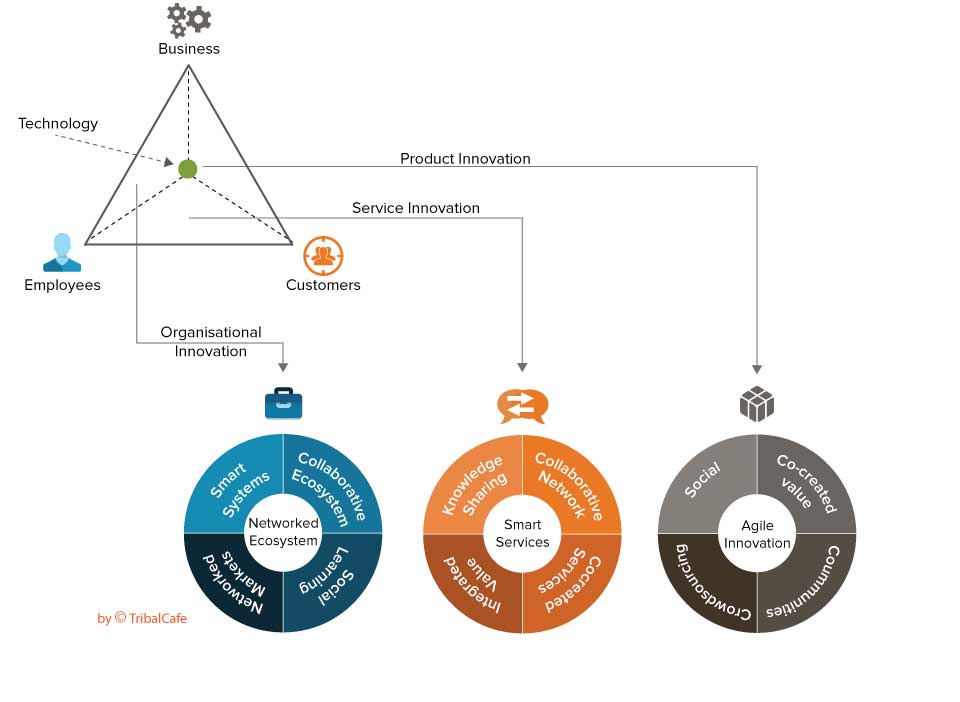
As you can see, one of the main drivers of business model innovation is digital technologies which in themselves drive digital business models and new ways of producing value (or co-creating value).
In this guide, I’ll explore some of the ways you can use digital to create powerful new business models.
A Guide To Business Model Innovation
- Why business model innovation?
- Why some business models create a competitive advantage
- Develop a strategy
- Harness the Power of Business Model Patterns
- Map your existing business model
- Identify competitors business models
- Use a Lean Startup Approach
- Think Differently Using Analogy and Recombination
- Business model innovation examples
Why The Need for Business Model Innovation?
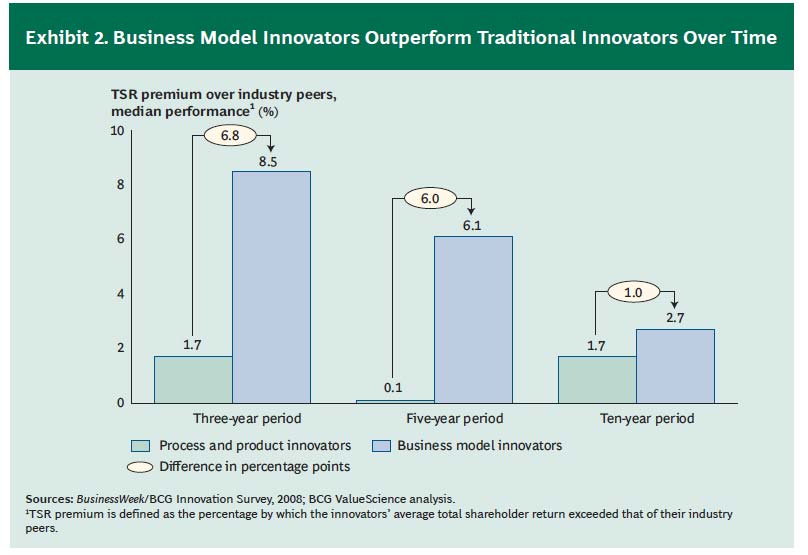
Repeated studies have shown that business model innovation delivers longer performance than simply creating new products or services.
- Product life cycles and design cycles are getting shorter.
- Competition is coming from unexpected places.
- Disruptions from business models that offer better customer experiences, not just simple products.
- New and emerging technologies that break industry and market norms – large efficiency gains, new data models and improved customer experiences.
- New competitors enter markets, often from surprising sources such as from emerging economies.
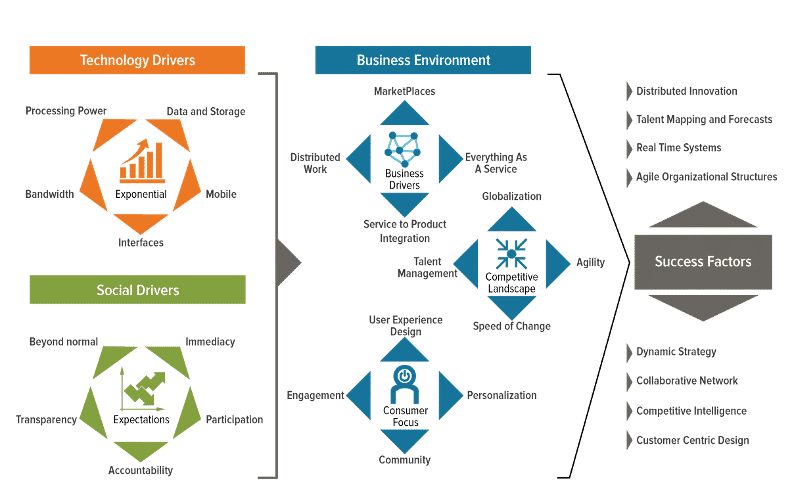
Change is the new normal. Disruptive technologies, globalization and a constantly shifting set of competitors makes it harder to compete and sustain profits.
Business model innovation is tightly related to how you design a business. Although that sounds obvious, many CEO’s and other executives treat it as though it was about products design or service design, when in fact it requires an organisational design approach.
For large organisations, business model transformations are complex change processes that require significant investments in planning and resources. The business logic is geared towards optimising the existing business model – not adapting to new environments. Overcoming the way of working, the emotional ties to existing processes and internal relationships is what holds back many companies – but it needn’t be that way.
For small innovative startups that means you can rapidly test, iterate and outmanoeuvre larger organisations who are sluggish in comparison. Startups become the disruptors leaving larger organisations the choice of either copying the new business model or buying the disruptor.
But a good business design and an innovative business model are not enough. You need to be able to sense change, adapt and be agile by having adaptive and dynamic resources.
Why some business models create a competitive advantage
All good strategies focus on how you create a competitive advantage that is sustainable. In other words, it is hard for others to replicate or imitate.
As a result, you earn more profits for longer periods of time. However, that simple explanation gives the impression that you can set a strategy and forget it. That the business environment doesn’t change much and you don’t need to adapt your strategy or business model.
The problem is that the pace of change, the business environment, is blazingly fast. Companies now operate with higher levels of uncertainty than ever before. So focusing on the wrong things leads to short terms gains but long term problems.
How To Create Your Sustainable Advantage
Warren Buffet is chairman and CEO of Berkshire Hathaway and one the most successful in the world. He advocates investing in businesses that create defensible moat. A moat is a metaphor for an enduring competitive advantage.
Learn more about how to create moats for your business by reading Why Moats Matter: The Morningstar Approach to Stock Investing.
Business models are harder to replicate than products or services because they involve the complex configuration of how you do things – people, operations, culture, technologies… To help guide your thoughts here are some ways to consider.
The 5 Moat Sources are:
- Cost Advantage
- Recurring Revenue
- Intangible Assets (brands, patents, license)
- Switching Costs
- Network Effect
- Efficient Scale
1. Cost Advantage: Change Your Cost Structure – Operating Model, Market Model…
Producing a product differently and at lower costs is not easy. However, with so many new materials and technology available there are lots of opportunities to reinvent products and lower costs.
New technologies also hit one of the trends I highlighted earlier that of personalization and immediacy. 3D printing otherwise known as additive manufacturing offers incredible opportunities to reduce carbon footprint and satisfy demand locally. While not there yet, this is a good time to consider how these technologies can shift cost structures.
Operating models can be transformed through automation. In fact, AI is predicted to reshape industries. McKinsey predicts AI-based predictive maintenance has the potential to deliver between $.5T to $.7T value to manufacturers.
Examples: Tesla going direct to market – disintermediation effect – reducing market costs. In a similar way this is the approach taken by Casper who sells beds direct to consumers.
Action for business model innovation: Explore how you can change cost structures in a market.
2. Recurring Revenue
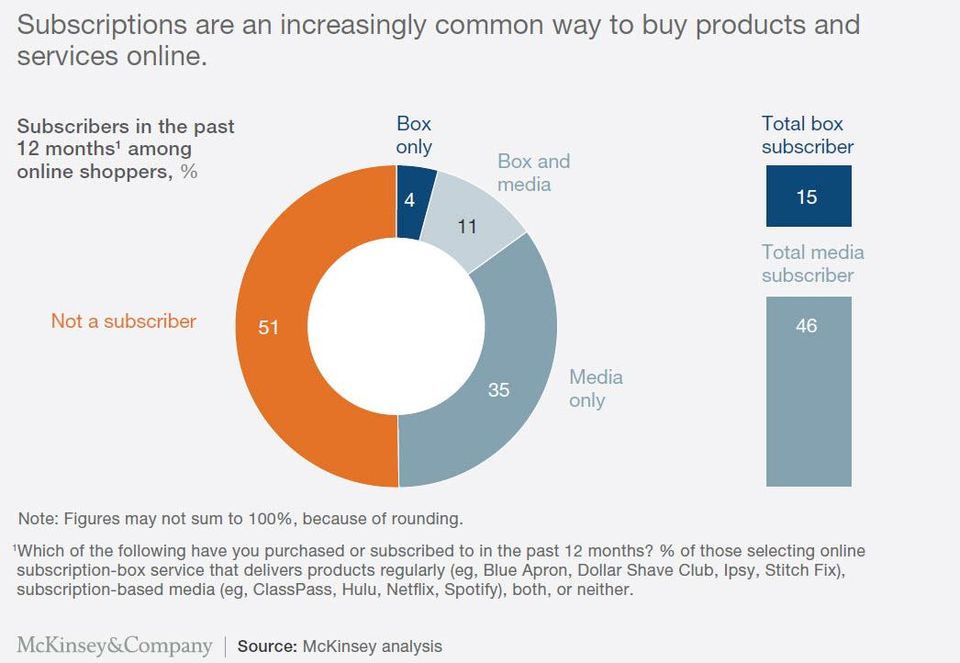
Generating recurring revenues is vital to any business. Repeatable revenue from existing customers provides you with a base from which to grow. If you constantly have to find new customers and are a transaction-based business then growth becomes costly and difficult.
Examples: Disruptors like Google, Apple and Netflix all have substantial recurring revenue models. Most of these platform-based businesses rely on subscriptions. Google business model uses subscription business model services for its cloud offering, Google Play and many other services. Apple likewise uses subscriptions for Apple movies as does Netflix for its services.
Action for business model innovation: review your revenue model – can you harness data sources to create new services? Can you move to a subscription service?
3. Intangible Assets
Brands become a powerful way to secure repeat business and gain dominance in a market. Carefully crafted brands that design powerful customer experiences are a winning force in today’s economy. Brands become the go-to product or service. To cultivate a brand though you have to know your customers, harness data and insights to be able to peel away the reasons why they buy and how you solve their problems.
Patents are another moat that can be used. If you consider many of the top technology companies such as IBM they consistently file hundreds of patents each year. Even if you are not an international business you can use licenses to create a revenue stream and protect your business.
4. Switching Costs
Switching costs are the pains a customer or client experiences when they move to another brand or supplier. Those pains are often costly in terms of time, hassle, money, or risk and therefore deter people from making changes.
It used to painful to switch electricity suppliers but thanks to new intermediary businesses this is no longer the case. Swapping banks used to be hard and even though it is easier, the problems associated with it still prevent many from switching. Switching costs can be
Examples: Apple users if they were to switch would have to learn a new operating system and in many cases use new software products. These switching costs prevent many from changing. However, these pains can be offset by a lower price and in some cases that is where Apple has lost market share.
Action for business model innovation:
- Decrease the cost your customer must pay to switch to your product.
- Increase the cost your customer must pay to switch to competitors.
Switching costs doesn’t mean you make it difficult to move away from your services e.g. you don’t offer data migration services. The concept is the opposite of that and involves looking at making the value you offer so strong that customers couldn’t get the same value elsewhere easily. As an example, if you offer a superb financial accounting software and want to lower switching costs then you would make it easy to onboard new customers and offer free training and courses. Of course, if your software is easy to use then this becomes a powerful mechanism to compete.
5. Network Effects
The network effect is when the value of a product or service increases as more customers use that product or service. You can read more about network effects and how they apply to platforms.
Quite often it is easy to understand how network effects work. Take for instance Facebook and other social media platforms. The more people use these platforms the more attractive they become to users and to indirect users such as advertisers.
Example: Tencent is a dominant company in China with a raft of powerful brands such as QQ Music, Kugou and Kuwo. What makes Tencent powerful is that it owns so many different platform businesses.
Action for business model innovation: what can you scale through network effects? are there online communities you can generate that would enhance the business? Can you create an ecosystem of complementary products or services?
5. Scale
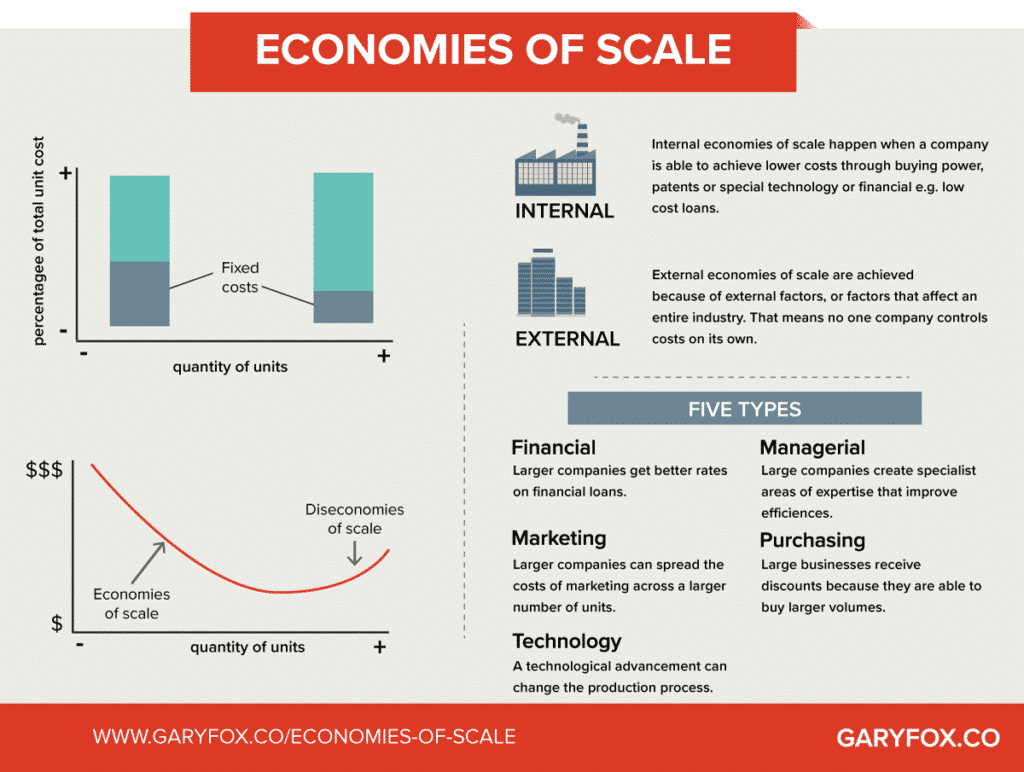
I’ve mentioned scale a lot through other posts and the benefits that come to scaling a business. Essentially, you lower your fixed costs relative to your revenue and thus can either offer a lower price to the market or earn more profits – the ultimate goal being able to do both.
3. Develop Your Strategy
A business model isn’t a replacement for a strategy. You need to understand the broader business environment trends within a given market. Ignoring a trend or issue and not fully understanding the competitive landscape will mean you are developing your idea and strategic hypothesis in a bubble.
Using a PESTEL analysis and Porter’s five forces are still useful frameworks to understand the underlying drivers in a market.
Some startups say to me that there is nothing like there idea of product, however upon closer inspection and few clicks on Google and you can usually find what people are already using or potentially some other startups occupying and developing a similar solution.
Investors will expect you to have at least understood your potential competition or who could easily replicate your model e..g. a company that has large resources and may do this to defend its position.
4. Harnessing Business Model Patterns
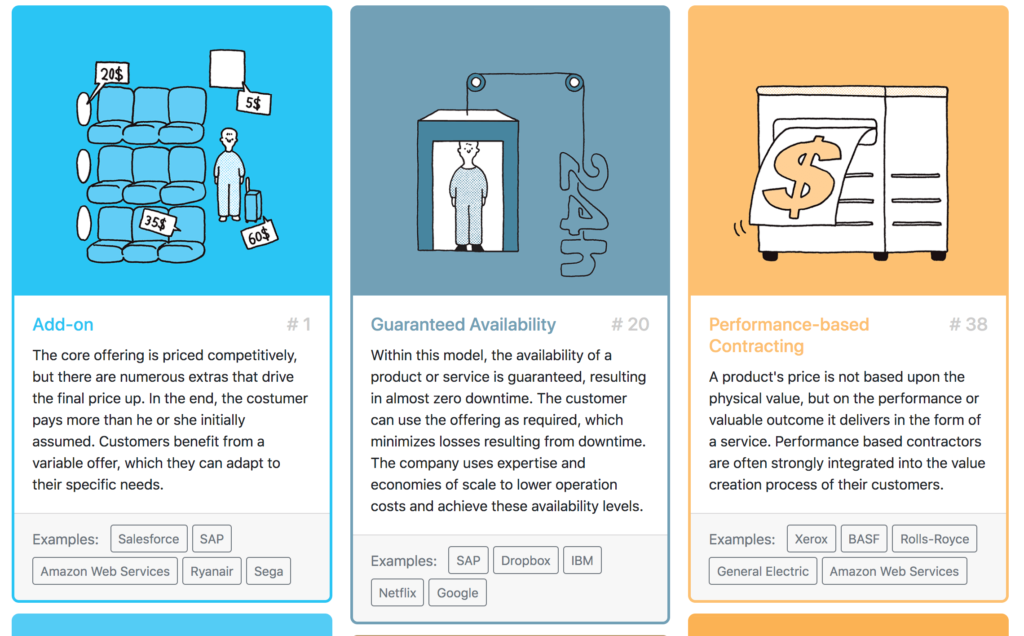
Business model patterns are a useful way to understand different ways you can harness business models based on proven patterns that are being used by other companies.
An important point here is that some patterns are complementary to each other. As an example, a two-sided market and subscription pattern enhance each other.
You can use patterns to identify trends in your existing market as well as build out ideas for new business models.
5. How to map an existing business model
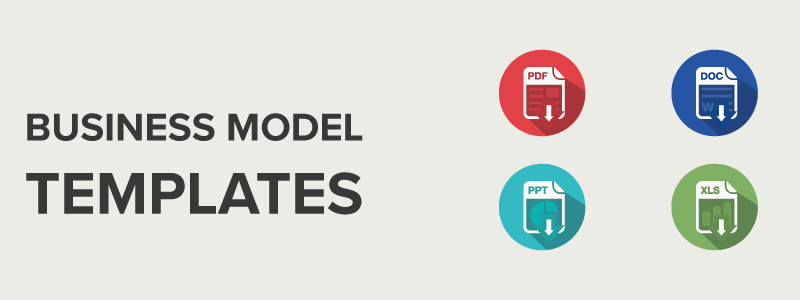
Business model innovation involves being different, creating something new. If you’re an existing business then the first thing is to understand and map you current business model.
Simply download some business model templates and then use these to consider how your business works and creates value.
6. Identify Competitive Business Models
This stage lays the foundation for you to be creative. It is the groundwork you need to do that then allows you to unleash your creative ideas and come up with something new.
In any given industry, a dominant business model tends to emerge over time.
Usually, this is because it works, delivers profits and satisfies customers needs.
This is not to say it can’t be changed but you need to understand the costs associated with disrupting markets and grabbing customers.
By understanding the main business models in a market you have the ability to creatively think around the value proposition, operating model and revenue model. I’ll talk more about the creative piece in a bit.
7. The Startup Approach – The Lean Business Model
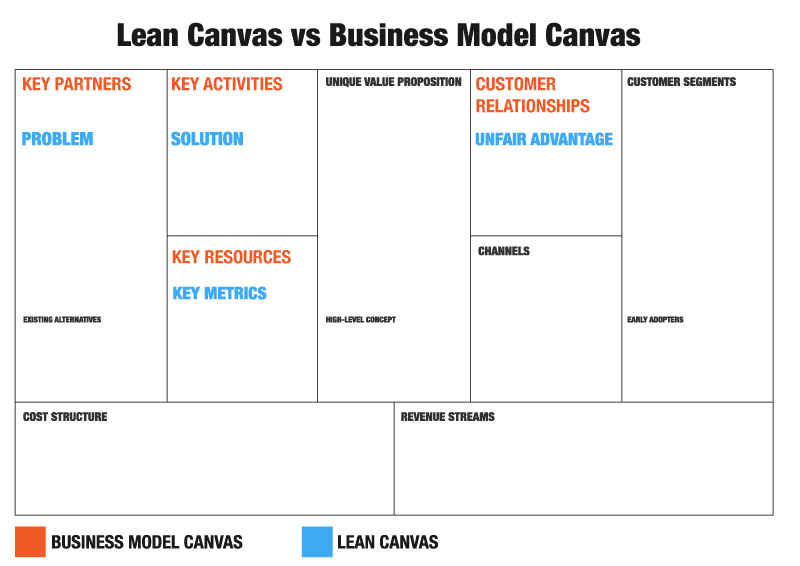
8. Creative Thinking Using Analogy and Recombination
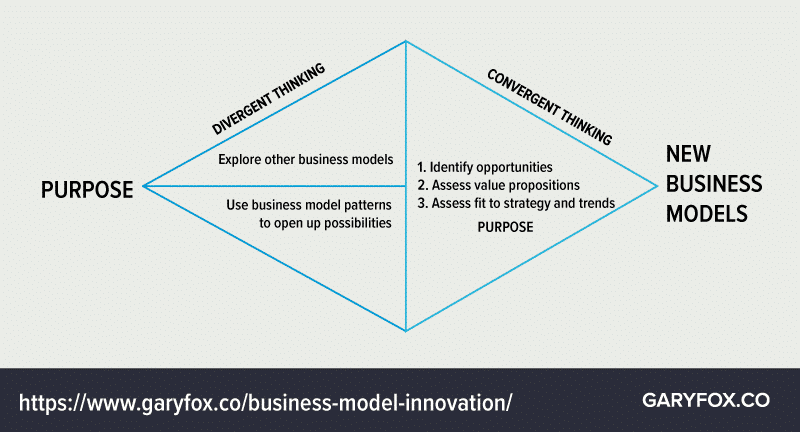
the Power of Analogy
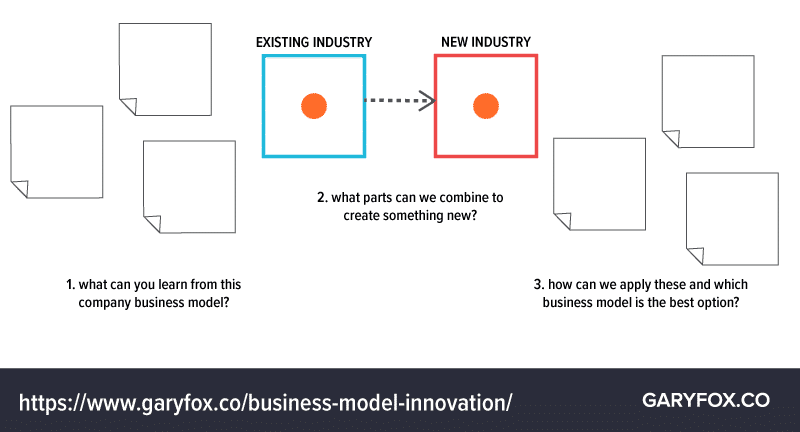
A lot of successful companies that we think of as disruptors made use of analogy.
They adapted business models from other industries and applyied them to their own.
The founder of Graze based this business model on his previous company LoveFilm.
Similarly, Nespresso adopted Gillette’s razor blade model.
The value of analogical thinking in the business model design is that they help deal with complex problems and simplify ideas.
Recombination The Driver of Digital Innovation
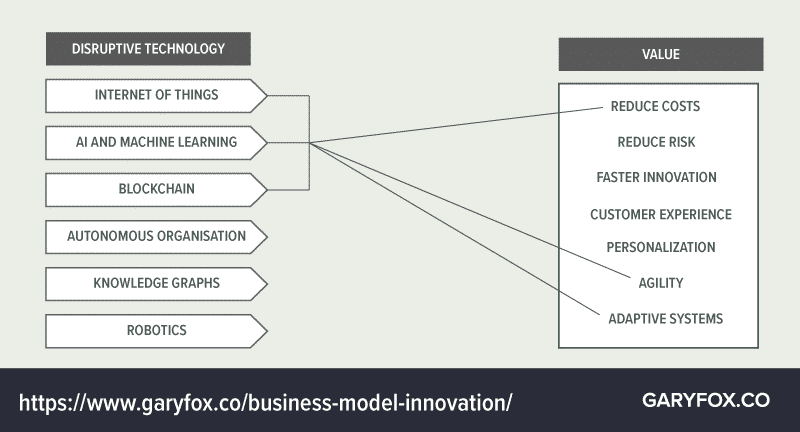
New and emerging technologies present endless ways to create novel new business models. These disruptive technologies allow you to reinvent and reconfigure the operating model. market model and the revenue model.
In the example above I have created some basic value elements that you could consider, however, there are lots more available. Remember that the value proposition needs to ultimately align with a customer and they need to understand why they should buy – that is often not the technology but what it does for them.
Summary of Business Model Innovation
I haven’t talked about platforms or specific technologies, these are just resources that can help you define new models to organize work, to create products and services that offer new value in a market.
Try to reinvent and rethink your business model. The greatest challenge today starts not with just pure profit model, but with the shared concept of value, that means you offer value through considering the wider impact of your business idea on society, the planet and the people you employ.
